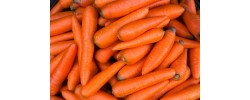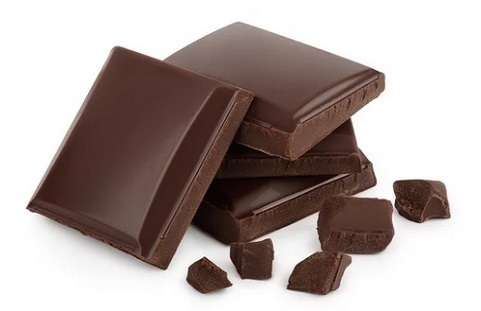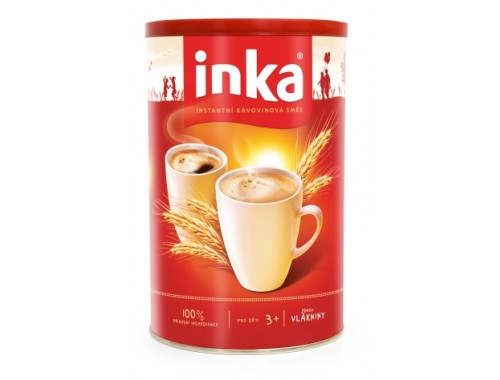Polish parsley and carrots from Poland
Carrot (Daucus carota) is one of the most important root vegetables grown in Poland. It belongs to the Apiaceae family and is characterized by its abundance of nutrients. The main component that distinguishes carrots is beta-carotene, a precursor of vitamin A, which is responsible for proper vision and skin health. Carrots are also a source of vitamins C, E, K, and B-group vitamins, as well as minerals such as potassium, calcium, iron, and magnesium. In Poland, many carrot varieties are cultivated, adapted to different climatic and soil conditions. The most popular groups of varieties include Berlikumer carrots, with a cylindrical shape and smooth skin, Flakkese carrots, characterized by large, long roots, and Nantes carrots, which have a short growing season and are valued for their sweet taste. Carrot varieties are also categorized based on their use: edible carrots are sold fresh or processed, industrial carrots are used for juice and concentrate production, while fodder carrots are utilized in animal feed.
Poland is one of the leading carrot producers in Europe. The annual production of this vegetable fluctuates between 700,000 and 900,000 tons, placing Poland among the top countries in the European Union in terms of harvest volume. The largest carrot-growing areas are located in the Kuyavian-Pomeranian, Masovian, and Greater Poland regions, which are characterized by fertile soils and favorable climatic conditions for carrot cultivation. A significant portion of production is intended for export, highlighting the high quality of Polish vegetables. Polish carrots are valued on foreign markets for their intense color, taste, and freshness. The export of carrots from Poland amounts to an average of 100,000 to 150,000 tons annually. Poland exports carrots primarily to EU countries, with Germany being the largest importer due to geographical proximity and high demand for fresh vegetables. Other significant importers include the Czech Republic, the United Kingdom, Lithuania, and Slovakia. Polish carrots also reach markets in Ukraine and Scandinavian countries, such as Denmark and Sweden. Exports to the United Kingdom have increased after Brexit, as British importers began seeking alternative suppliers outside Western Europe. The Western European markets are particularly important, where consumers appreciate vegetables with high nutritional and taste values. In addition to fresh carrots, processed products such as frozen carrots, carrot juices, and carrot concentrates are also exported.
Parsley (Petroselinum crispum) is a biennial plant, also belonging to the Apiaceae family, valued for both its taste and health-promoting properties. In Polish cuisine, parsley holds an important place, with both its root and leaves widely used as seasoning and ingredients in soups, salads, and main dishes. Parsley is rich in vitamin C, which strengthens immunity, as well as potassium, iron, magnesium, and folic acid. A significant part of its flavor profile comes from essential oils, giving it a distinctive aroma. In Poland, two main types of parsley are grown: root parsley and leaf parsley. Root parsley is characterized by a long, conical root with white or cream-colored flesh and is mainly used for consumption and processing. Leaf parsley has lush, dark green leaves that are popular as a fresh addition to dishes. Among the varieties of root parsley exported from Poland, the most common are Lenka, Omega, and Berlin parsley, which are adapted to various soil and climate conditions.
Although the export of parsley from Poland is smaller in volume compared to carrots, it plays a significant role in the structure of root vegetable exports. Annual parsley production in Poland is approximately 100,000 to 150,000 tons, of which around 15,000 to 30,000 tons are exported. Poland also focuses on exporting parsley to European countries. The main markets for Polish parsley are Germany, the Czech Republic, Austria, Denmark, and Sweden. Germany remains a key market due to high demand for fresh vegetables and organic products. Parsley is also exported to Norway, Finland, and the Netherlands, where it is appreciated for its quality and taste. The export of leaf parsley is growing dynamically, particularly in Western Europe, where parsley leaves are a popular culinary addition. Polish parsley producers are increasingly directing their products to Middle Eastern markets, where demand for root vegetables is rising. The export includes both root parsley and parsley leaves, which are highly sought after in European kitchens. Polish farms are adapting production to high-quality standards, increasing competitiveness in international markets. The growth of parsley exports is supported by the development of organic farming, which is especially appreciated by consumers in Western Europe. Additionally, the export of processed parsley, such as dried leaves and concentrates, is gaining importance, opening new opportunities for Polish producers.
The export of carrots and parsley from Poland is gaining importance due to the growing interest in healthy food, the dynamic development of organic farming, and modern solutions in storage, logistics, and vegetable transport. Consumers are increasingly looking for products from pesticide-free and chemical fertilizer-free cultivation, which supports the expansion of organic cultivation areas in Poland. In Western Europe, demand for BIO products is rising, creating additional opportunities for Polish exporters. Another advantage is modern vegetable storage technologies, such as controlled atmosphere, enabling the export of fresh products year-round, regardless of the season.
However, Poland's export of carrots and parsley faces certain challenges. These include growing competition from producers in southern Europe (Spain, Italy) and non-EU countries such as Morocco and Egypt. Changing climatic conditions, such as droughts or heavy rains, can negatively impact crop yields. Additionally, increasing phytosanitary requirements in foreign markets necessitate adapting production to stricter standards.
Forecasts indicate a further increase in the export of carrots and parsley from Poland. It is predicted that in the coming years, exports of these vegetables may grow by 5–10% annually. A key role in further export development will be played by market diversification, including entry into markets in the Middle East, Asia, and North Africa. The development of processing, investments in modern technologies, and obtaining international quality certificates such as BIO or GlobalG.A.P. can significantly boost the competitiveness of Polish products. An important element of the export strategy is also active promotion at international trade fairs, such as Fruit Logistica in Berlin or SIAL in Paris. Thanks to these activities, Poland has the opportunity to strengthen its position as a leader in carrot production and export and parsley export on the international stage.

 pl
pl  en
en  de
de  es
es  fr
fr  it
it  pt
pt  ru
ru  sv
sv 























.jpg)


